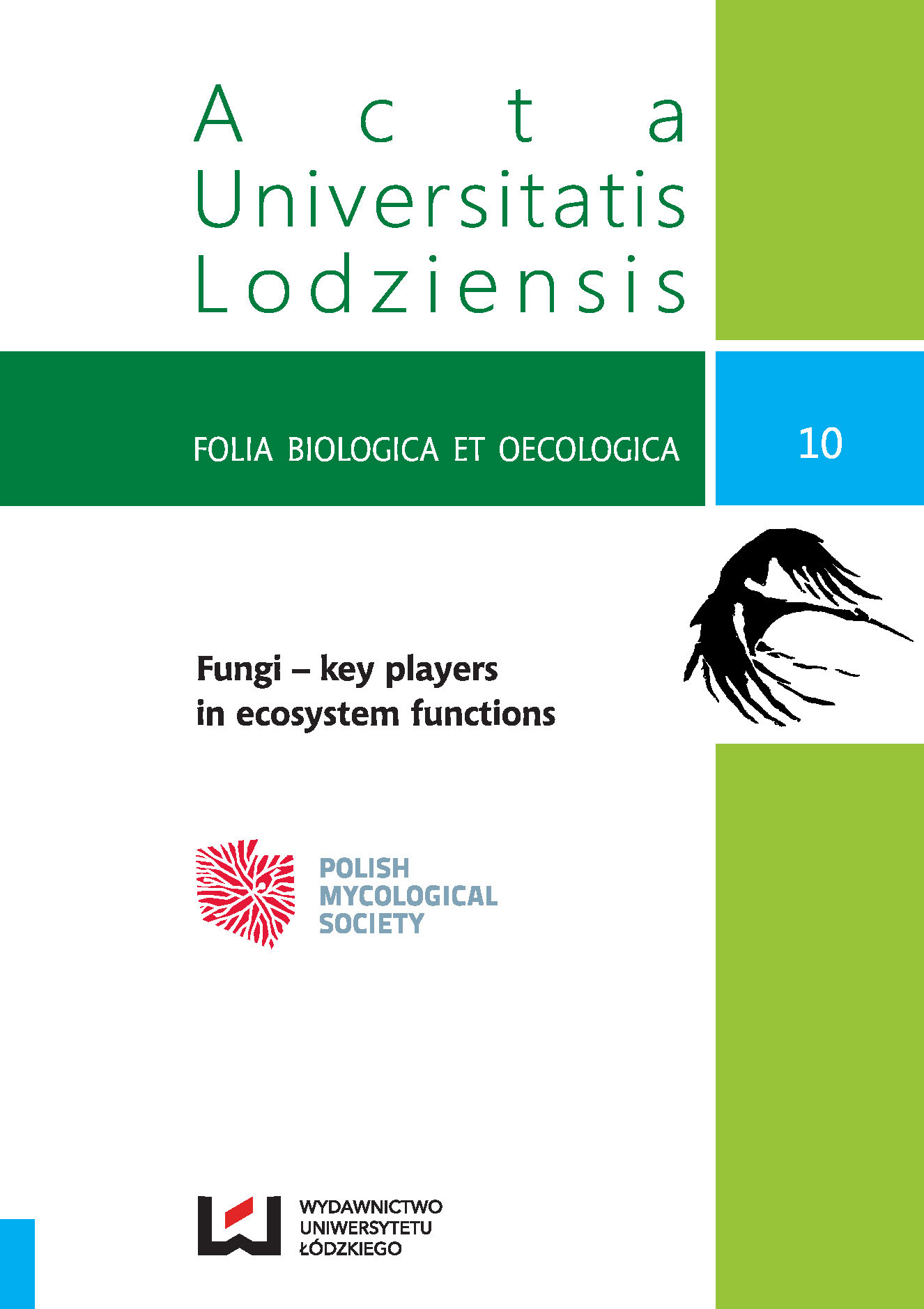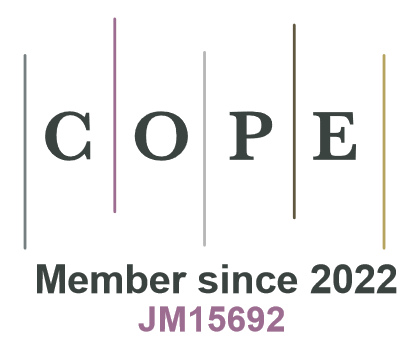Mushroom flavour
DOI:
https://doi.org/10.2478/fobio-2014-0007Keywords:
odour, fungi, aromaAbstract
Mushrooms and fungi not only present a fascinating world of shapes, both macro- and microscopic, but they are also an interesting source of flavours, fragrances and odours, e.g. garlic, coconut, flour-like, cucumber or fruit-like, as well as the most characteristic for this kingdom of living organisms mushroom-like flavour and aroma. Fungi can possess many different and interesting flavours and fragrances – starting from nice anise-like, fruit-like, cucumber, garlic, to cheese-garlic, and ending with potato or flour-like smells. Some mushrooms emit carbide or distinctly faecal-like odour. The taste of mushrooms is frequently correlated with their aroma. What components does the core of a mushroom flavour consist of? Chemical analysis of specimens reveals compounds responsible for characteristic flavour and odour. It was found that the most characteristic flavour compound is defined mainly by C8 volatiles. Between all C8 compounds the most important for mushroom flavour are oct-1-en-3-ol, octan-3-ol, octan-3-on and oct-1-en-3-on. Fungi and mushrooms can enable biotechnological production of some flavour components, for instance the Nidula niveotomentosa produces a characteristic raspberries compound – raspberry ketone in submerged cultures; the biotechnological production can also provide rare and tasty forest mushroom biomass e.g. edible boletus.
Downloads
References
California Fungi. 2014. Hygrophorus agathosmus. http://www.mykoweb.com/CAF/species/Hygrophorus_agathosmus.html accessed June 2014
Google Scholar
Dijkstra, F.Y. 1976. Studies on mushroom flavours. 3. Some flavour compounds in fresh, canned and dried edible mushrooms. Zeitschrift für Lebensmittel-Untersuchung und Forschung, 160: 401–405.
Google Scholar
Dijkstra, F. Y. & Wikén, T.O. 1976. Studies on mushroom flavours. 1. Organoleptic significance of constituents of the cultivated mushroom, Agaricus bisporus. Zeitschrift für Lebensmittel-Untersuchung und Forschung, 160: 255–262.
Google Scholar
Domsh, K.H., Gams, W. & Anderson, T.-H. 1980. Compendium of soil fungi. Vol.1. Academic Press, London, New York, Toronto, Sydney, San Francisco.
Google Scholar
Fraatz, M.A. & Zorn, H. 2010. Fungal flavours. In: Hofrichter M. (ed.), The Mycota X, Industrial Applications, 2nd. Springer-Verlag, Berlin, Heidelberg, pp. 249–268.
Google Scholar
Guevara, G., Bonito, G., Trappe, J.M., Czares, E., Williams, G., Healy, R.A., Schadt, Ch. & Vilgalys, R. 2013. New North American truffles (Tuber spp.) and their ectomycorrhizal associations. Mycologia, 105(1): 194–209. http://dx.doi.org/10.3852/12-087
Google Scholar
Hansen, H.-P. & Klingenberg, A. 1983. Determination of some important flavour compounds in commercial mushroom concentrates. Zeitschrift für Lebensmittel-Untersuchung und Forschung, 177: 333–335.
Google Scholar
Henkel, T.W. 2005. Parakari, an indigenous fermented beverage using amylolytic Rhizopus in Guyana. Mycologia, 97(1): 1–11.
Google Scholar
Jaklitsh, W.M., Stadler, M. & Voglmayr, H. 2012. Blue pigment in Hypocrea caerulescens sp. nov. and two additional new species in sect. Trichoderma. Mycologia, 104(4): 925–941. http://dx.doi.org/10.3852/11-327
Google Scholar
Muszyńska, B., Sułkowska-Ziaja, K. & Wójcik, A. 2013. Levels of physiological active indole derivatives in the fruiting bodies of some edible mushrooms (Basidiomycota) before and after thermal processing. Mycoscience, 54: 321–326.
Google Scholar
Nyegue, M., Zollo, P.-H.A., Bessière, J.-M. & Rapior, S. 2003. Volatile components of fresh Pleurotus ostreatus and Termitomyces shimperi from Cameroon. Journal of Essential Oil Bearing Plants, 6(3): 153–160. http://dx.doi.org/10.1080/0972-060X.2003.10643344
Google Scholar
Pildain, M.B., Coetzee, M.P.A., Wingfield, B.D., Wingfield, M.J. & Rajchenberg, M. 2010. Taxonomy of Armillaria in the Patagonian forests of Argentina. Mycologia, 102(2): 392–403. http://dx.doi.org/10.3852/09-105
Google Scholar
Poucher, W.A. 1991. Poucher's Perfumes, Cosmetics and Soaps. Vol. 1. The raw materials of perfumery, 9th ed., Edited and revised by A.J. Jouhar, Springer Science+Business Media, Dordrecht.
Google Scholar
Rapior, S., Talou, T., Pélissier, Y. & Bessiére, J.-M. 2002. The anise-like odor of Clitocybe odora, Lentinellus cochleatus and Agaricus essettei. Mycologia, 94(3): 373–376.
Google Scholar
Reineccius, G.. 1994. Source book of flavours, 2nd Ed., Springer Science+Business Media, Dordrecht.
Google Scholar
Rifai, Y. 1969. A revision of the genus Trichoderma. Mycological Papers, 116: 1–56.
Google Scholar
Snowarski, M. 2005. Atlas grzybów. Pascal, Bielsko-Biała.
Google Scholar
Snowarski, M. 2010. Spotkania z przyrodą. Grzyby. MULTICO Oficyna Wydawnicza, Warszawa.
Google Scholar
Taupp, D.E., Nimtz, M., Berger, R.G. & Zorn, H. 2008. Stress response of Nidula niveo-tomentosa to UV-A light. Mycologia. 100(4): 529–538. http://dx.doi.org/10.3852/07-179R
Google Scholar
Trappe, M.J., Trappe, J.M. & Bonito, G.M. 2010. Kalapuya brunnea gen. & sp. nov. and its relationship to the other sequestrate genera in Morchellaceae. Mycologia 102(5): 1058–1065. http://dx.doi.org/10.3852/09-323
Google Scholar
Wood, W.F., Smith, J., Wayman, K. & Largent, D.L. 2003. Indole and 3-chloroindole: The source of the disagreeable odor of Hygrophorus paupertinus. Mycologia, 95(5): 807–808.
Google Scholar
Woźniak, W. 2007. A characteristic of mycelium biomass of edible boletus. Acta Mycologica 42(1): 129–140.
Google Scholar
Yoshii, T. 1980. A method for culture of shiitake and processing of its flavour. Pat.-No. 55-50668 (in Japanese).
Google Scholar
Downloads
Published
How to Cite
Issue
Section
License

This work is licensed under a Creative Commons Attribution-NonCommercial-NoDerivatives 4.0 International License.









